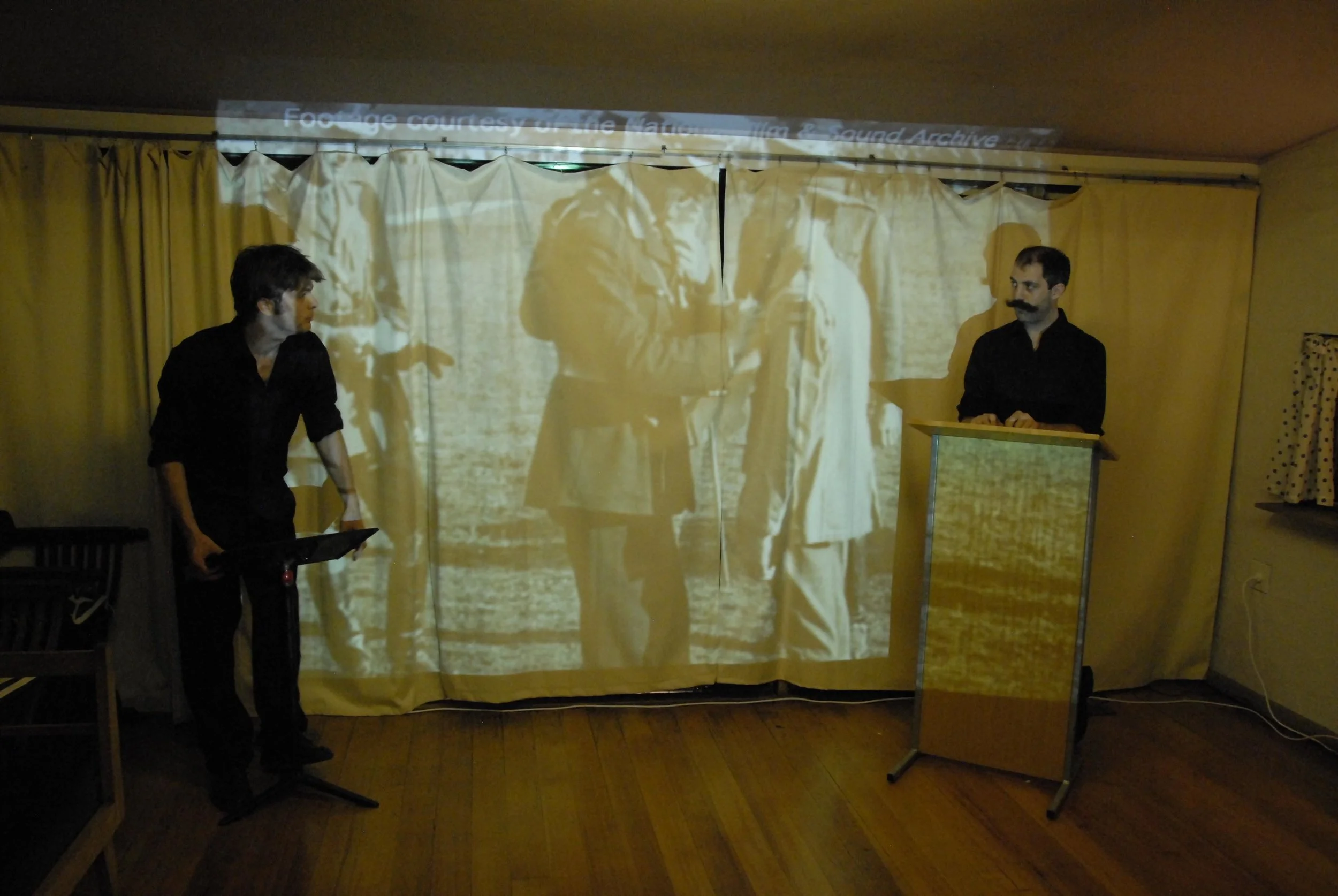Food for the Great Hungers is an interactive performance installation based on complex systems science and Australian history.
The story took the audience through a retelling of Australian history, from 1901 to the present day. At key turning points over the course of the 20th century, the audience were invited to make decisions that changed the course of history.
As each audience created their own alternative Australian history, we were able to ask questions such as: How did our society grow and evolve over the decades and centuries? What is responsible for Australia’s unique culture?Is it the result of decisive action on the part of its leaders, the physical geography of this continent, or merely due to chance?
Hungers was developed through a residency at the Manning Clark House Scholarly and Cultural Centre. This process was supported by the Australia Council Inter-Arts office, the Manning Clark House Scholarly and Cultural Centre, Leximancer Software and the Foundation for Young Australians’ Hunting Season.
Script excerpt
Imagine dropping grains of sand one by one onto a tabletop. The pile builds up slowly into a little sand mountain. The grains are held in place by friction. At a certain angle, friction is no longer able to restrain the motion, and the avalanches commence.
Once one grain starts to move, it collides with others and triggers a chain reaction. The avalanche might run out of steam after only a few dozen grains have been set rolling, or it might continue to propagate until virtually the entire slope slides away.
Here’s the crucial thing: there’s no telling, when we add a new grain to the pile, whether it will set just a few other grains in motion or trigger the collapse of the entire slope. Big avalanches are less frequent, but avalanches of all sizes are possible. The pile exists in a state of what is called ‘self-organised criticality’.
A nation such as Australia also exists in a state of self-organised criticality. New people appear and new events occur continually in Australia’s history. Most have no effect. A few cause a small amount of change. And very rarely, a person or a decision takes place which causes the whole country to move in a new direction.
Looking back, we are tempted to ascribe great importance to those few people and events that triggered great changes. We forget that at the time, they were just are of the many potential catalysts. When the system is poised on the brink of change, it takes only the slightest push to drive it in one direction or the other. The fall of a grain of sand can be enough.



